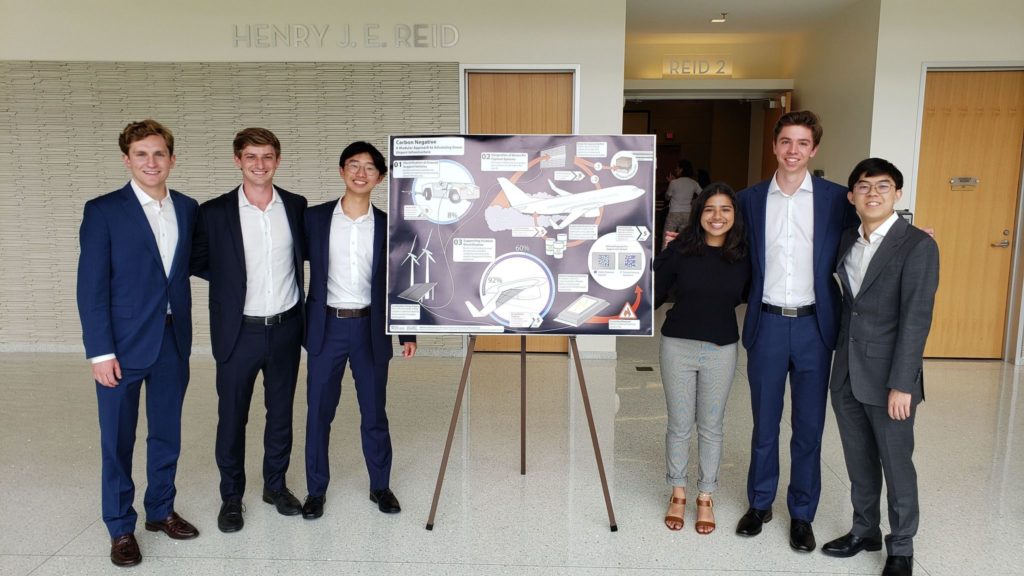
Last month, Penn’s Wharton Undergraduate Aerospace Club (WUAC) traveled to NASA’s Langley Research Center in Hampton, Virginia, to present its well-researched vision: a modular set of technologies that could transform any airport into a greener, cleaner operation.
The team, which includes Benjamin Chan, a rising sophomore in the School of Engineering and Applied Science, and Bryce Gunderman, a rising junior in Wharton and Penn Engineering, submitted a research paper, infographic, and video outlining their ideas as a part of the Gateways to Blue Skies: Airports of Tomorrow Competition. In April, they received the news that their group had been chosen as a finalist to present a proposal to NASA staff and industry leaders at NASA Langley. Their project earned the “Most Intriguing Concept” award at the competition.
The proposal had three main concepts, including one aimed at supporting the emerging electrification of the aviation industry. “By 2050, we would see the emergence of new electric planes,” says Marcus Tsuei, a rising sophomore from Denver who led the team. “In order to give this new technology as smooth of an entry as possible into the market, we would do things to the exterior of the airport, like developing a battery charging and swapping infrastructure to make sure electric planes could have quick turnarounds.”
A second thrust of their proposal concerned electrifying the ground vehicle fleet, sourcing electric options for vehicles that push planes, ferry luggage, and so on.
It was the group’s third focus that the judges appeared to find most compelling: a system capable of removing carbon emissions from the air, a technology known as direct air capture.
The students didn’t need to look far for expertise on this technology. Jennifer Wilcox, a Penn Presidential Distinguished Professor of Chemical Engineering and Energy Policy, who is currently on leave while she serves in the Biden administration’s Department of Energy, is a pioneer in the field of carbon capture. They worked directly with Peter Psarras, a research assistant professor in the Clean Energy Conversions Laboratory at Penn, to explore the possible applications of direct air capture at airports.
Read “A cleaner, greener airport of the future” at Penn Today.
